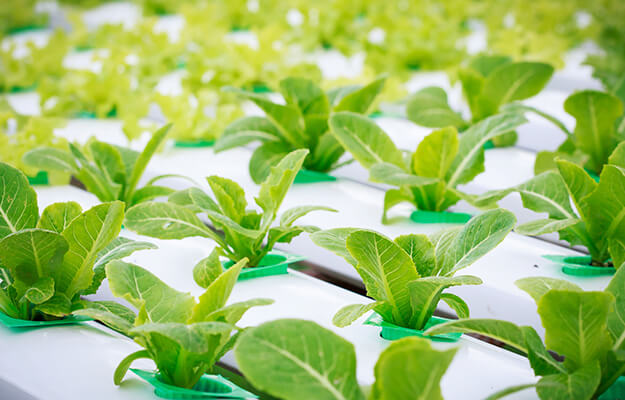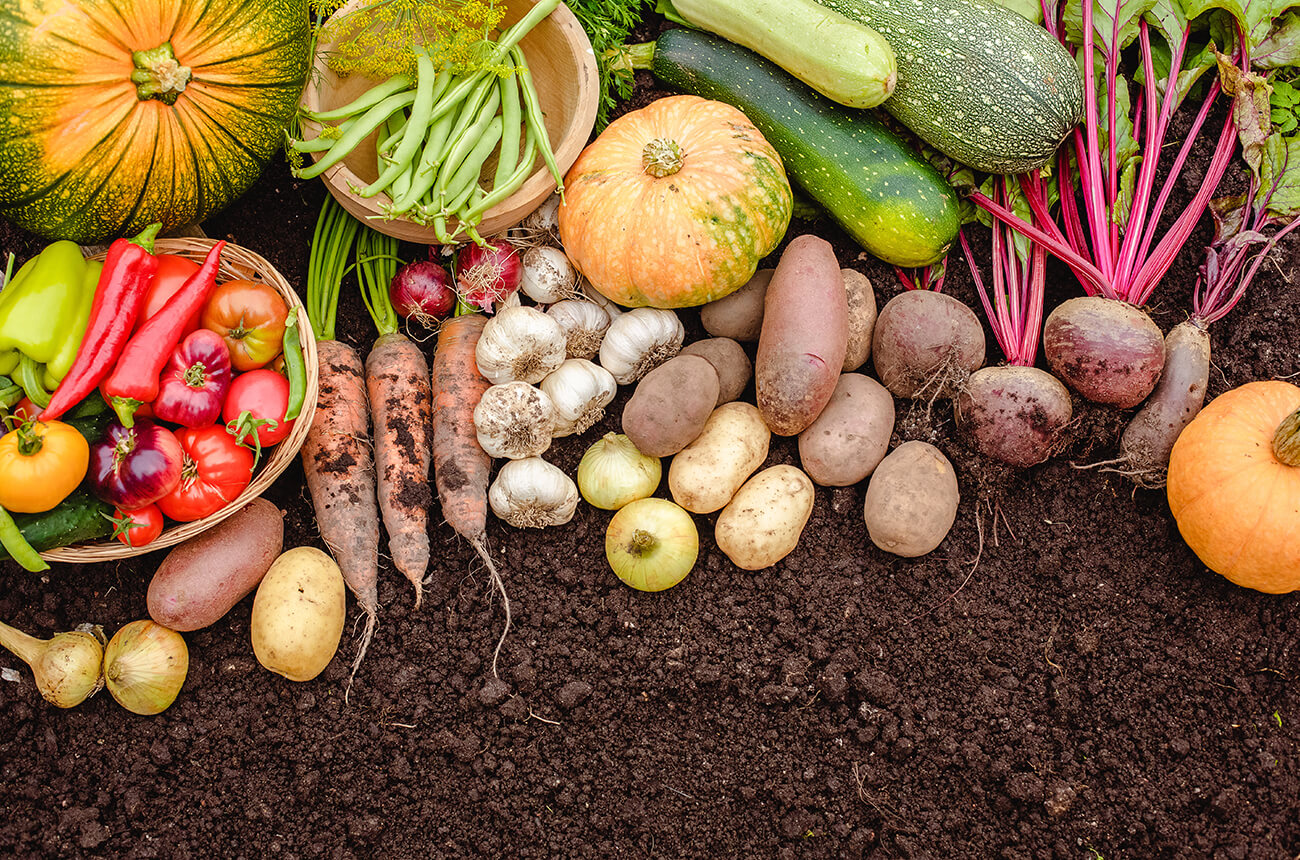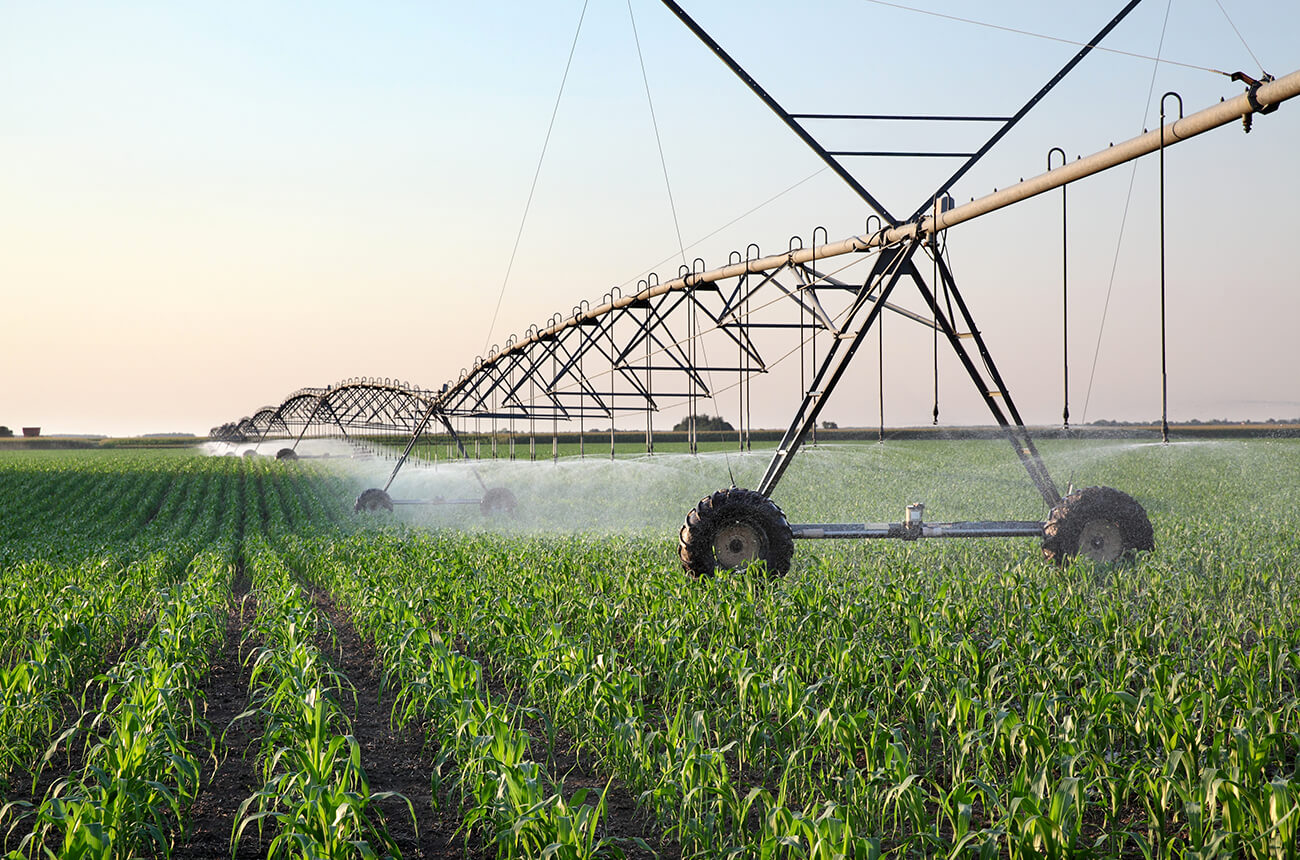MOLECULAR HYDROGEN
AND REDUCTION
Molecular hydrogen has been shown to address oxidative stress by selectively scavenging and neutralising highly reactive and toxic radicals (which can result in dis-ease and infection). The beneficial effects that molecular hydrogen has in treating a wide range of stress and dis-eases is becoming increasingly well documented with an estimated 1,500+ scientific articles having been published since 2007. These studies have documented the significant beneficial effects that molecular hydrogen and oxygen has to offer, not only for animal and mammalian species associated with more than 170 different disease models, but for all living systems including plants and aquatic species.

ASSISTING ALL LIFE EVERYWHERE
Hydrogen is involved in all aspects of life – whether it is energy creation, protein creation, metabolic function or an essential ingredient of physical matter. Hydrogen within an organism is usually produced via internal processes, which is then utilised by that body. The hydrogen continuously needs to be produced, distributed and allocated so that it can then be metabolised, consumed, recycled and discharged. It then needs to be replenished again, constantly with no exceptions. All life depends on it.
Evidence is proving that an appropriate amount of molecular hydrogen in an aerobic organism will optimise the health and life span of that organism’s cells and mitochondria. It selectively reduces the toxic free radicals that are created during energy production that potentially cause damage to the components of the cell including proteins, lipids and DNA.
Molecular hydrogen and oxygen supplementation can assist in the live movement and export of stock, resulting in the elimination of stress-induced mortality, improved taste, reduced antibiotic and chemical additives, improved growth rates, increased ability to breed and hatch difficult species, as well as significantly improving immunity to resist disease, virus and pathogens at the farm site.
In our own trials at our own facility we have seen dramatic improvements to stressed stock in very short period of time simply by adding these technologies to an already existing management system. This is a very exciting field and one that is well worth investigating in order to address the multitude of significant issues facing many organisms the world over.
Hydrogen plays a part in virtually everything that exists,
and without it our planet would just be a rock.
The Hydrogen era is upon us. Whether we know it or not,
hydrogen was a part of everything we have been and
done in the past, it is part of everything we are now and
more than ever it needs to be embraced by everyone – to
allow us to grow into the future.
WHY WE NEED IT – EVERYWHERE!
The entire food chain as we know it is under threat in ways that only 100 years ago was inconceivable. These threats are well recognised and accepted by the majority of governments around the world and are considered to be an issue of national security by many, and an issue so great is affecting every person on the planet in some way or another.
In the vast majority, imbalance or dis-ease is a consequence of either exposure or deficiency, regardless of the DNA or genetic susceptibility. To allow balance and to achieve a desired outcome, the right recipe must be used with the correct ingredients. Getting the recipe right in the first place will significantly reduce the potential for the consequence thereafter.
Hydrogen and its electrons enable the fundamental elements of life to not only exist, but to repair, regenerate, and be maintained. It is the smallest and most abundant element in the universe. The mechanics of life exist at a molecular and cellular level utilising an electron transport chain that ultimately results in an oxidative process, which then needs to be reduced by antioxidants.
HYDROGEN DRIVEN AGRICULTURE – DELIVERED BY WATER
Molecular Hydrogen 1
Molecular Hydrogen 2
Molecular Hydrogen 3
Molecular Hydrogen 4
SOME MOLECULAR INSIGHTS...
We believe that supplementation of molecular hydrogen into a living organisms diet will offer great improvements to its being and in a vast majority of cases, it may very well be the biggest piece of the puzzle in producing sustainable health.
Depending on the circumstances or the environmental challenges that the organism endures, it still needs to provide or ingest its own supply of anti-oxidants for survival via cellular respiration in animal and aquatic type species, and both photosynthesis and microbial soil health for plants. The overall health of any organism will be directly associated with this essential function, no matter how you look at it.
If an organism is to resist oxidation, then it needs to be able to produce or access anti-oxidants. Although there are many types of antioxidants that exist, all are not equal – and any cannot do the job of every. Molecular Hydrogen however, comes very close as it is already more than 3 out of every 5 atoms in certain species and is the primary source of electrons required for life.
Generally speaking, all things are constantly oxidising all of the time, with the intervention of anti-oxidant activity and the donation of electrons being what stabilises free radicals. If something was to die and the molecular hydrogen produced in the gut was to cease being produced, that something would oxidise. Oxidising quickly is known as decomposing or rotting, whilst slow oxidising can be referred to as ageing or degeneration. Oxidative stress is a state of unmanaged oxidation, and is considered to be the root cause for over 170 different diseases or ailments across various species. It then makes sense that oxidative stress is simply a molecular hydrogen deficiency and therefore potentially a completely manageable state.
Hydrogen, Oxygen, Nitrogen and Carbon make up the vast majority of atoms in most species and access to these atoms and molecules is imperative for life to exist. The carbon aspect is easily accessed at ground level as it is generally ingested as food, with the gut doing the processing job of making the carbon biologically available. Oxygen is also available at ground level as it is a heavy molecule and is most readily accessed at sea level, the higher the altitude the less available oxygen is in the air. Nitrogen makes up about 78% of the atmosphere and is also readily available virtually everywhere.
Molecular hydrogen on the other hand is very light and is most abundant in the upper atmosphere and out of reach for most organisms to reach. Where this all comes together is in the bonded molecule of water which balances as 2 parts hydrogen and 1 part oxygen, H2O. In this form an organism can process the hydrogen in gaseous form and enable biological access, metabolic function, the transfer of electrons, creation of energy and the reduction of free radicals created during these processes.
They say that liquid water is the source of all life, and it is because of this form that both hydrogen and oxygen can be found together. If it weren’t for water, then the ingredients of life would remain apart. Hydrogen up high, and oxygen down low – so close yet so far apart.
Now that science understands the significance for having access to both molecular hydrogen and molecular oxygen, it is able to focus on how nature facilitates this process and the efficiencies that it offers. Photosynthesis is referred to as the source of life on earth as it is the first process adopted by plants to break the molecular bond of water molecules and enable access to both molecular hydrogen and oxygen. Further along the road of life come cellular respiration and the development of more advanced life forms.
Regardless of the type of organism in question, the overall health of that organism is significantly linked to its ability to facilitate this function and provide the food for metabolism, replication, growth and maintenance.
Hydrogen Technologies are focussed on making practical differences to a whole range of species that ultimately make up the entire food chain cycle. We hope to enable clean, naturally grown products that are substantially lower, if not completely void, of all the additives associated with todays high density and high productivity intensive farming management protocols.
We believe that organisms regularly accessing molecular hydrogen and oxygen supplementation are cleaner, stronger, healthier, more nutritious, have improved immunity and are able to resist stresses that would otherwise cause significant harm. We also understand that each application may need very different considerations regarding application method, concentration, frequency, infrastructure considerations or environmental restrictions.
Homeostasis is the goal of all life and the further away from that homeostasis one gets, the more likely one will see the manifestation of a particular consequence given the circumstances of the environmental or genetic challenges it has endured. Molecular hydrogen has shown considerable efficacy in dealing with both inflammation and oxidation resulting in dramatic beneficial results across a whole range of issues. Prevention is well understood to be the preferred path as opposed to dealing with what results when ease becomes dis-ease.
All life is now facing challenges like never before as it tries to deal with poorer nutritional food sources, poorer quality of drinking water, and poorer air quality.
There is more toxic load than ever before for the body in order to just survive. Providing an organism with the right ingredients to function correctly is the simplest and most noble quest of any food supplier for any species, and it is the absolute basis of all the resulting metabolic functions thereafter.
A strong and healthy plant will offer many flowers for pollination, will produce an abundance of fruit and, if all the ingredients of life are provided, will result in a great yield at harvest. All sorts of stresses can result in dramatic differences at conception, gestation, delivery or harvest time which can include things like too much water, not enough water, heat and cold stress, poor soil or salinity content, diet, oxidative state, toxic load and/or just poor overall health in general. At the end of the day it all comes down to the overall health and strength of the host and its ability to provide the appropriate nutritional value to enable cell growth and replication.
SCIENCE AND
APPLICATIONS
- THE UNIVERSE
- SOIL
- H2 IN PLANTS
- PLANT GASES
- SALINITY
- POSTHARVEST
- AQUACULTURE
- ANIMALS
Hydrogen Bonds And Life
in the universe - 2018
The scientific community is allocating more and more resources to space missions and astronomical observations dedicated to the search for life beyond Earth. This experimental endeavour needs to be backed by a theoretical framework aimed at defining universal criteria for the existence of life. With this aim in mind, this paper explores which chemical and physical properties should be expected for life, possibly different from the terrestrial ones, but similarly sustained by genetic and catalytic molecules. It shows that functional molecules performing genetic and catalytic tasks must feature a hierarchy of chemical interactions operating in distinct energy bands.
Of all known chemical bonds and forces, only hydrogen bonds are able to mediate the directional interactions of lower energy that are needed for the operation of genetic and catalytic tasks. For this reason and because of the unique quantum properties of hydrogen bonding, the functional molecules involved in life processes are predicted to have extensive hydrogen-bonding capabilities.
A molecular medium generating a hydrogen-bond network is considered essential to support the activity of the functional molecules. These hydrogen-bond requirements constrain the viability of hypothetical biochemistries alternative to the terrestrial one, providing thermal limits to molecular processes for life, and offer a conceptual framework to define a transition from a “covalent-bond stage” to a “hydrogen-bond stage” in prebiotic chemistry.
Predicting which possible types of biochemistries may take place in the universe is an extremely difficult task. Life embraces different levels of structural and functional complexity, starting from the molecular level up to the highest supramolecular levels, where the most elaborate functions take place.
The most complex biological structures and functions result in large from contingent events that shape the pathways of life evolution. As a result, the evolutionary outcome is unpredictable, even for molecular structures. Nonetheless, the interactions that take place between biomolecules are mediated by well-known chemical bonds and forces, which obey the universal laws of physics and chemistry.
In this work we confine our attention to such chemical interactions, which are unaffected by the evolutionary history of life. In this way we can search for common chemical and physical properties of life that can be eventually employed as universal criteria of habitability. Here we propose a minimum set of requisites for the existence of life driven by molecular processes.
Molecular Hydrogen, a Neglected Key Driver of Soil
Biogeochemical Processes - 2019
The atmosphere of the early Earth is hypothesized to have been rich in reducing gases such as hydrogen (H2). H2 has been proposed as the first electron donor leading to ATP synthesis due to its ubiquity throughout the biosphere as well as its ability to easily diffuse through microbial cells and its low activation energy requirement.
Even today, hydrogenase enzymes enabling the production and oxidation of H2 are found in thousands of genomes spanning three domains of life across aquatic, terrestrial and host-associated ecosystems.
Although H2 has already been proposed as a universal growth and maintenance energy source, its potential contribution as a driver of biogeochemical cycles has received little attention. Here, we bridge this knowledge gap by providing an overview of the classification, distribution, and physiological role of hydrogenases.
Distribution of these enzymes in various microbial function groups as well as recent experimental evidence are integrating to support the hypothesis that H2-oxidizing microbes are the keystone species driving C cycling along O2 concentration gradients found in H2-rich soil ecosystems.
Hydrogenases and the
Role of H2 in Plants - 2020
There is an increasing weight of evidence showing molecular hydrogen (H2) has effects in biological systems in both animal and plant species. When considering an ever-increasing global population, and the growing obligation we have to feed each individual, the requirement for inexpensive and sustainable treatment options to enhance the quality and longevity of produce will be a necessity for preventing shortages of essential farmed foods.
In this regard, treatment with H2 is described as being beneficial for a range of human diseases, whilst in agriculture the application of H2 has been demonstrated to increase both crop health and yield, which prove beneficial for the arable and cattle-feed industries in particular.
To illustrate, evidence shows that H2 is able to mediate root development and stress responses in plants due to heavy metals and drought. It can also be used for improving post-harvest storage of crops, for example with kiwifruits. How organisms such as plants, are exposed to H2, and how they respond to it is important to understand and will lead to better treatments and better yields in the future.
Roles of hydrogen gas in plants - 2017 H2 regulates plant growth and development
Hydrogen-rich water (HRW) was regarded as a safe and easily available way to mimic the physiological functions of endogenous H2 in plants and animals. In animals, our understanding about the biological role of H2 is developing rapidly. It is reported that H2 can protect animal cells by increasing the activity of antioxidant enzymes such as catalase (CAT) and superoxide dismutase (SOD).
The role of H2 in plants has been recently studied during several plant growth and development stages including seed germination, seedling growth, root development, stomatal closure and anthocyanin synthesis. More importantly, a growing number of studies have found that H2 is an antioxidant that can selectively reduce cytotoxic free radicals.
H2 Enhances Salt Tolerance - 2012
Soil salinity is one of the most significant abiotic stresses that affect virtually every aspect of plant physiology and metabolism. Normally, salinity entails cellular hyperosmolarity and impairs ion homeostasis in plants. Secondary stresses such as oxidative damage occur as a consequence of the above primary effects.
Sustaining highly efficient antioxidant systems, which are tightly regulated by different groups of transcription factors, becomes vital for plants to scavenge the salinity-triggered reactive oxygen species (ROS) overproduction. In Arabidopsis, the zinc-finger transcription factor ZAT10/12 plays a key role in abiotic stress tolerance, which can be attributed to the specific activation of antioxidant defence genes, e.g. cytosolic ascorbate peroxidase1 (cAPX1) and Fe superoxide dismutase (FSD1).
The role of heme oxygenase as a component of the antioxidant defence system has been well documented in recent times. The mutation or over-expressing of Arabidopsis HO1 (HY1) exhibited salt hypersensitivity or tolerance characteristics, respectively.
Hydrogen‑rich water increases postharvest
quality by enhancing antioxidant capacity
In a recent study, we assessed the effect of hydrogen-rich water (HRW) on the physicochemical characteristics and antioxidant capacity of Hypsizygus marmoreus during 12 days of postharvest storage at 4 °C. Different concentrations of HRW (25, 50 and 100%) were tested, and our data showed that 25% HRW treatment had the most significant effect on preservation of the nutrients within H. marmoreus compared with the control group.
In addition, 25% HRW treatment significantly reduced the relative electrolyte leakage rate and malonaldehyde (MDA) content (P
These results suggest that HRW treatment could delay rot incidence in mushrooms during storage by regulating antioxidant defence ability. Our study supplies a new and simple method to maintain the quality and to extend the shelf life of mushrooms.
H2 treatments, immune activity and survival of zebrafish - 2017
This study aimed to evaluate the preventive effects of hydrogen-rich water (HRW) on zebrafish challenged by A. hydrophila. As a result, we found an increased survival rate of bacteria-challenged zebrafish that were subjected to the HRW immersion treatment. Furthermore, we revealed that HRW was able to block multiplication of A. hydrophila in zebrafish.
In addition, treatment of zebrafish infected by A. hydrophila with effective concentrations of HRW, strongly affected the expression of genes mediating pro-inflammatory and anti-inflammatory cytokines. Down-regulation of selected pro-inflammatory immune response genes, and up-regulation of the anti-inflammatory cytokine gene in the spleen, kidney, and liver were observed.
This study is the first of its kind to investigate the effects of HRW on fish infected with bacteria and might shed new light on hydrogen's antimicrobial effects and further application in aquaculture fish species.
H2 suppresses oxidative
stress and elevates antioxidant potential in Thoroughbred horses
after racing exercise - 2015
In animals, muscular damage or late-onset chronic inflammation can result from exercise-induced reactive oxygen species (ROS). The balance between these exercise-induced ROS and the defence mechanisms by intrinsic or extrinsic antioxidants plays an important role in maintaining energy homeostasis and mitochondrial functions.
Despite the increase in metabolic sources for ROS during intensive and exhaustive exercises, the deleterious effects by ROS are suppressed by the adaptive induction of numerous intrinsic ROS-elimination mechanisms, including superoxide dismutase, glutathione peroxidase, and non-enzymatic glutathione.
In contrast to endurance training, intensive exercise requires fast and high-power contraction of white muscles rich in fast type IIx fibres, in which the majority of energy is supplied through glycolytic and anaerobic reactions. Although the role of ROS in anaerobic exercise, for which the energy supply is quickly exhausted, is not fully understood. The majority of such anaerobic strenuous exercises continue over 30 seconds up to several minutes, thereby subsequently or simultaneously requiring aerobic energy metabolism.
Under such circumstances, oxidative stress is thought to largely regulate the muscle conditions after exercise, and it is thus important to balance the oxidative state with that of the antioxidant defence capabilities.
H2-saline significantly and integrally suppressed exercise-induced oxidative stress in Thoroughbred horses after exhaustive racing. Further, pre-exercise treatment also resulted in enhanced antioxidant potential. On the other hand, the transient muscle damages induced by the racing exercise, during which the anaerobic energy supply is depleted, were not affected by H2-saline injection.
Taken together, the results of the present study clearly demonstrated that the direct injury caused by rapid and strong muscle contractions occurred independently from the generation of ROS. The antioxidant capabilities of H2 during exercise, in which inveterate oxidative stress significantly elevates the 8-OHdG levels, may aid the beneficial properties of exercise by enhancing the antioxidant potentials as well as the anti-inflammatory effects.
- THE UNIVERSE
- SOIL
- H2 IN PLANTS
- PLANT GASES
- SALINITY
- POSTHARVEST
- AQUACULTURE
- ANIMALS
Hydrogen Bonds And Life
in the universe - 2018
The scientific community is allocating more and more resources to space missions and astronomical observations dedicated to the search for life beyond Earth. This experimental endeavour needs to be backed by a theoretical framework aimed at defining universal criteria for the existence of life. With this aim in mind, this paper explores which chemical and physical properties should be expected for life, possibly different from the terrestrial ones, but similarly sustained by genetic and catalytic molecules. It shows that functional molecules performing genetic and catalytic tasks must feature a hierarchy of chemical interactions operating in distinct energy bands.
Of all known chemical bonds and forces, only hydrogen bonds are able to mediate the directional interactions of lower energy that are needed for the operation of genetic and catalytic tasks. For this reason and because of the unique quantum properties of hydrogen bonding, the functional molecules involved in life processes are predicted to have extensive hydrogen-bonding capabilities.
A molecular medium generating a hydrogen-bond network is considered essential to support the activity of the functional molecules. These hydrogen-bond requirements constrain the viability of hypothetical biochemistries alternative to the terrestrial one, providing thermal limits to molecular processes for life, and offer a conceptual framework to define a transition from a “covalent-bond stage” to a “hydrogen-bond stage” in prebiotic chemistry.
Predicting which possible types of biochemistries may take place in the universe is an extremely difficult task. Life embraces different levels of structural and functional complexity, starting from the molecular level up to the highest supramolecular levels, where the most elaborate functions take place.
The most complex biological structures and functions result in large from contingent events that shape the pathways of life evolution. As a result, the evolutionary outcome is unpredictable, even for molecular structures. Nonetheless, the interactions that take place between biomolecules are mediated by well-known chemical bonds and forces, which obey the universal laws of physics and chemistry.
In this work we confine our attention to such chemical interactions, which are unaffected by the evolutionary history of life. In this way we can search for common chemical and physical properties of life that can be eventually employed as universal criteria of habitability. Here we propose a minimum set of requisites for the existence of life driven by molecular processes.
Molecular Hydrogen, a Neglected Key Driver of Soil
Biogeochemical Processes - 2019
The atmosphere of the early Earth is hypothesized to have been rich in reducing gases such as hydrogen (H2). H2 has been proposed as the first electron donor leading to ATP synthesis due to its ubiquity throughout the biosphere as well as its ability to easily diffuse through microbial cells and its low activation energy requirement.
Even today, hydrogenase enzymes enabling the production and oxidation of H2 are found in thousands of genomes spanning three domains of life across aquatic, terrestrial and host-associated ecosystems.
Although H2 has already been proposed as a universal growth and maintenance energy source, its potential contribution as a driver of biogeochemical cycles has received little attention. Here, we bridge this knowledge gap by providing an overview of the classification, distribution, and physiological role of hydrogenases.
Distribution of these enzymes in various microbial function groups as well as recent experimental evidence are integrating to support the hypothesis that H2-oxidizing microbes are the keystone species driving C cycling along O2 concentration gradients found in H2-rich soil ecosystems.
Hydrogenases and the
Role of H2 in Plants - 2020
There is an increasing weight of evidence showing molecular hydrogen (H2) has effects in biological systems in both animal and plant species. When considering an ever-increasing global population, and the growing obligation we have to feed each individual, the requirement for inexpensive and sustainable treatment options to enhance the quality and longevity of produce will be a necessity for preventing shortages of essential farmed foods.
In this regard, treatment with H2 is described as being beneficial for a range of human diseases, whilst in agriculture the application of H2 has been demonstrated to increase both crop health and yield, which prove beneficial for the arable and cattle-feed industries in particular.
To illustrate, evidence shows that H2 is able to mediate root development and stress responses in plants due to heavy metals and drought. It can also be used for improving post-harvest storage of crops, for example with kiwifruits. How organisms such as plants, are exposed to H2, and how they respond to it is important to understand and will lead to better treatments and better yields in the future.
Roles of hydrogen gas in plants - 2017 H2 regulates plant growth and development
Hydrogen-rich water (HRW) was regarded as a safe and easily available way to mimic the physiological functions of endogenous H2 in plants and animals. In animals, our understanding about the biological role of H2 is developing rapidly. It is reported that H2 can protect animal cells by increasing the activity of antioxidant enzymes such as catalase (CAT) and superoxide dismutase (SOD).
The role of H2 in plants has been recently studied during several plant growth and development stages including seed germination, seedling growth, root development, stomatal closure and anthocyanin synthesis. More importantly, a growing number of studies have found that H2 is an antioxidant that can selectively reduce cytotoxic free radicals.
H2 Enhances Salt Tolerance - 2012
Soil salinity is one of the most significant abiotic stresses that affect virtually every aspect of plant physiology and metabolism. Normally, salinity entails cellular hyperosmolarity and impairs ion homeostasis in plants. Secondary stresses such as oxidative damage occur as a consequence of the above primary effects.
Sustaining highly efficient antioxidant systems, which are tightly regulated by different groups of transcription factors, becomes vital for plants to scavenge the salinity-triggered reactive oxygen species (ROS) overproduction. In Arabidopsis, the zinc-finger transcription factor ZAT10/12 plays a key role in abiotic stress tolerance, which can be attributed to the specific activation of antioxidant defence genes, e.g. cytosolic ascorbate peroxidase1 (cAPX1) and Fe superoxide dismutase (FSD1).
The role of heme oxygenase as a component of the antioxidant defence system has been well documented in recent times. The mutation or over-expressing of Arabidopsis HO1 (HY1) exhibited salt hypersensitivity or tolerance characteristics, respectively.
Hydrogen‑rich water increases postharvest
quality by enhancing antioxidant capacity
In a recent study, we assessed the effect of hydrogen-rich water (HRW) on the physicochemical characteristics and antioxidant capacity of Hypsizygus marmoreus during 12 days of postharvest storage at 4 °C. Different concentrations of HRW (25, 50 and 100%) were tested, and our data showed that 25% HRW treatment had the most significant effect on preservation of the nutrients within H. marmoreus compared with the control group.
In addition, 25% HRW treatment significantly reduced the relative electrolyte leakage rate and malonaldehyde (MDA) content (P
These results suggest that HRW treatment could delay rot incidence in mushrooms during storage by regulating antioxidant defence ability. Our study supplies a new and simple method to maintain the quality and to extend the shelf life of mushrooms.
H2 treatments, immune activity and survival of zebrafish - 2017
This study aimed to evaluate the preventive effects of hydrogen-rich water (HRW) on zebrafish challenged by A. hydrophila. As a result, we found an increased survival rate of bacteria-challenged zebrafish that were subjected to the HRW immersion treatment. Furthermore, we revealed that HRW was able to block multiplication of A. hydrophila in zebrafish.
In addition, treatment of zebrafish infected by A. hydrophila with effective concentrations of HRW, strongly affected the expression of genes mediating pro-inflammatory and anti-inflammatory cytokines. Down-regulation of selected pro-inflammatory immune response genes, and up-regulation of the anti-inflammatory cytokine gene in the spleen, kidney, and liver were observed.
This study is the first of its kind to investigate the effects of HRW on fish infected with bacteria and might shed new light on hydrogen's antimicrobial effects and further application in aquaculture fish species.
H2 suppresses oxidative
stress and elevates antioxidant potential in Thoroughbred horses
after racing exercise - 2015
In animals, muscular damage or late-onset chronic inflammation can result from exercise-induced reactive oxygen species (ROS). The balance between these exercise-induced ROS and the defence mechanisms by intrinsic or extrinsic antioxidants plays an important role in maintaining energy homeostasis and mitochondrial functions.
Despite the increase in metabolic sources for ROS during intensive and exhaustive exercises, the deleterious effects by ROS are suppressed by the adaptive induction of numerous intrinsic ROS-elimination mechanisms, including superoxide dismutase, glutathione peroxidase, and non-enzymatic glutathione.
In contrast to endurance training, intensive exercise requires fast and high-power contraction of white muscles rich in fast type IIx fibres, in which the majority of energy is supplied through glycolytic and anaerobic reactions. Although the role of ROS in anaerobic exercise, for which the energy supply is quickly exhausted, is not fully understood. The majority of such anaerobic strenuous exercises continue over 30 seconds up to several minutes, thereby subsequently or simultaneously requiring aerobic energy metabolism.
Under such circumstances, oxidative stress is thought to largely regulate the muscle conditions after exercise, and it is thus important to balance the oxidative state with that of the antioxidant defence capabilities.
H2-saline significantly and integrally suppressed exercise-induced oxidative stress in Thoroughbred horses after exhaustive racing. Further, pre-exercise treatment also resulted in enhanced antioxidant potential. On the other hand, the transient muscle damages induced by the racing exercise, during which the anaerobic energy supply is depleted, were not affected by H2-saline injection.
Taken together, the results of the present study clearly demonstrated that the direct injury caused by rapid and strong muscle contractions occurred independently from the generation of ROS. The antioxidant capabilities of H2 during exercise, in which inveterate oxidative stress significantly elevates the 8-OHdG levels, may aid the beneficial properties of exercise by enhancing the antioxidant potentials as well as the anti-inflammatory effects.
Due to the laws we are regulated by, we can only show a snapshot of the science already available, however there is much more to learn and share and we will continue to expand further on all information as the research unfolds.






